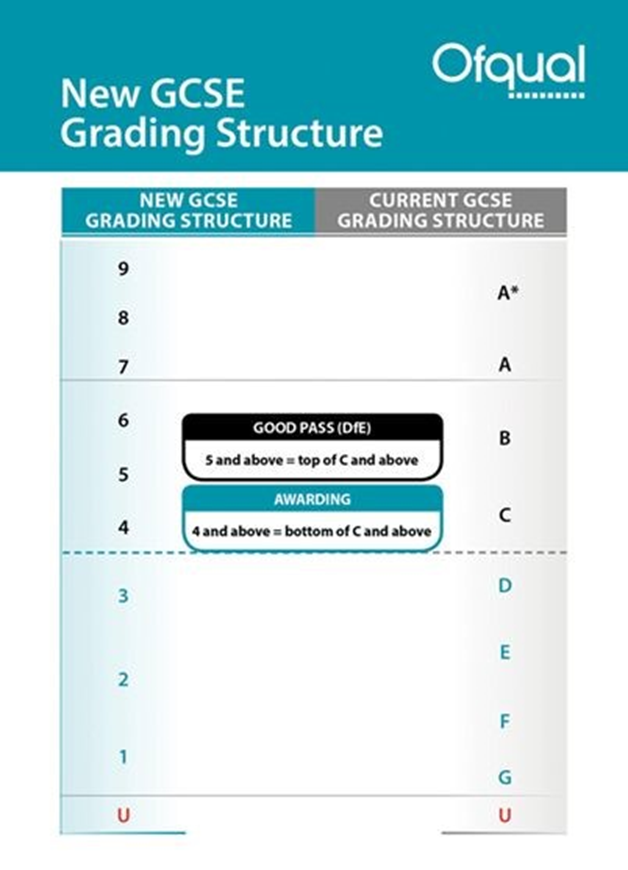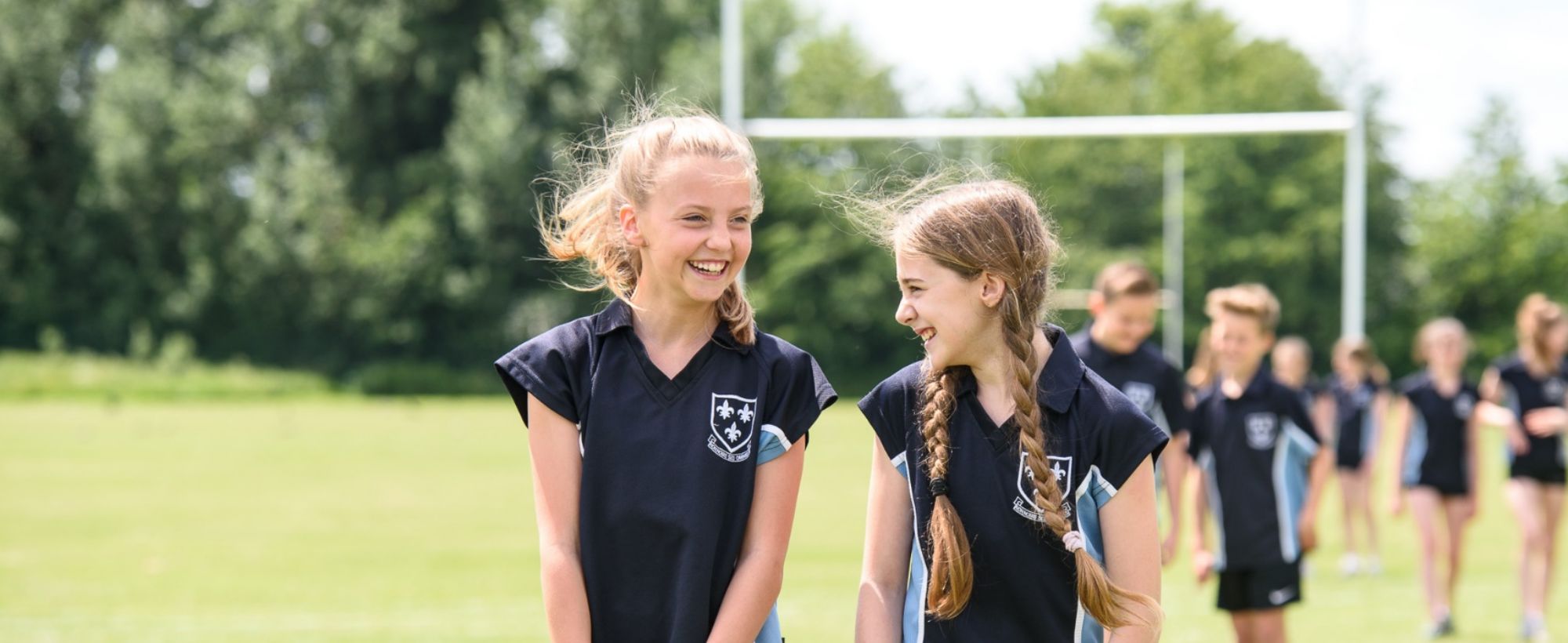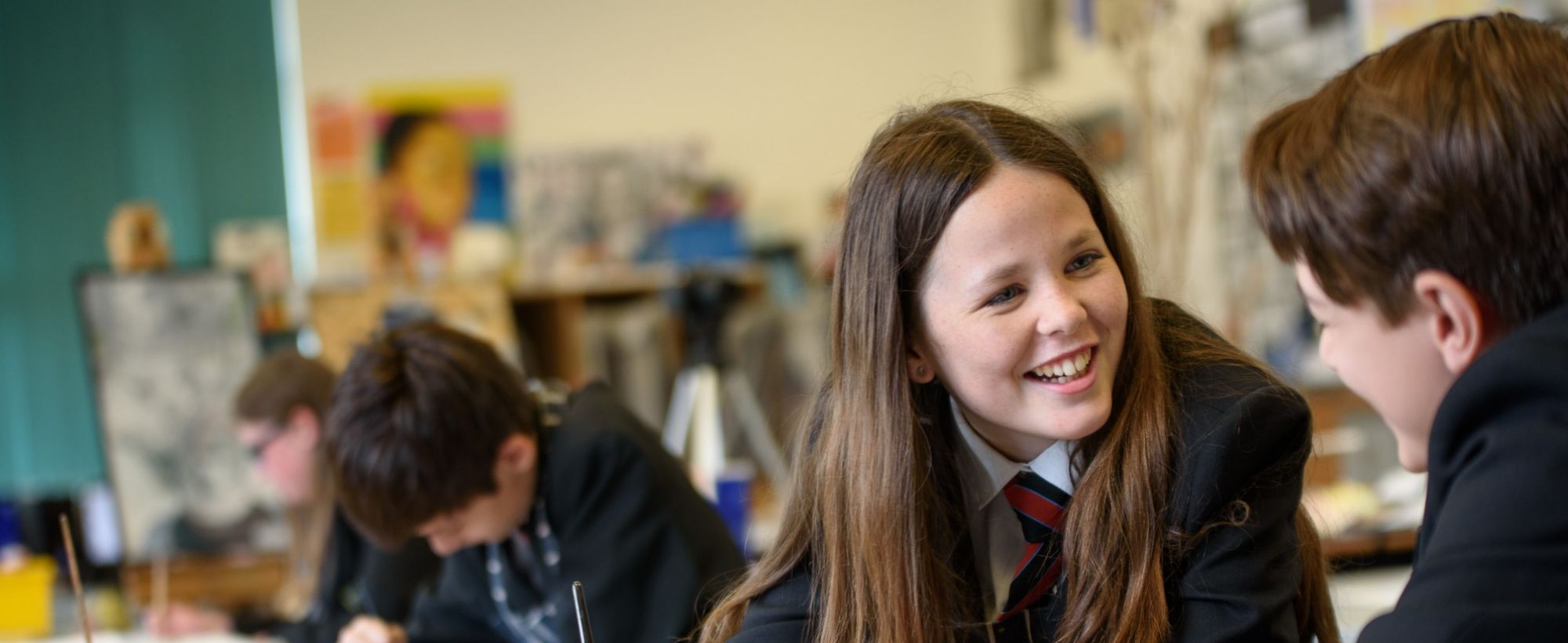Progress & Targets
This target is an estimate of likely performance, though is not a prediction or forecast. It represents the standard we might expect a “similar” student with the same KS2 (Year 6) scores to reach in the best 20% of schools.
As these targets are estimates, we realise their accuracy will vary slightly from subject to subject. In our experience, they provide a useful guide and are the most reliable ‘predictions’ we have, but should not be over emphasised.
We encourage all students to try to work to their best and they are taught according to their performance, not their target. Students targets increase by approximately 1 full grade each year (e.g. 2 > 3).
Go4Schools has a number of tables and graphs with increasing amounts of detail depending on how much information you’d like to know.
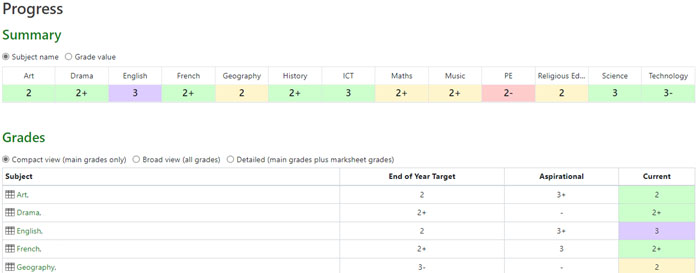
The colours indicate if the students current grade is on, above or behind their target.
In this example, the student is clearly excelling in English and currently below target in geography. At the start of the year we might expect a student to be slightly below their end of year target; this is indicated by the yellow colour. As the year progresses, the student would be expected to either close in on their target or continue to exceed it if they are already doing so.
Subject Assessment
Go4Schools enables you to track the grades achieved in each module and assessment in addition to the overall grade your child is currently working at.
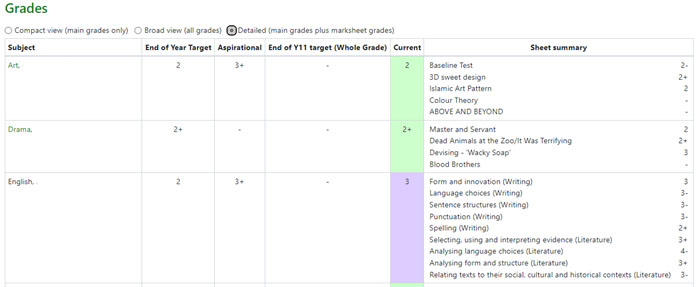
The “current” column gives the current standard of a student’s work in the subject, based on all completed assessments to date. This grade becomes more reliable as more assessments are completed and should be treated with a little caution at the start of the year. The current grade column is colour coded based on how the current grade compares to the student’s “target” grade in the same way as shown in the summary above. In this case the student is exceeding one of their targets by a significant margin and so the current grade is coloured purple. Where students are consistently exceeding their original challenging targets, we will issue a higher target in the “aspirational” grade column. This is a mark of real success as it shows that a student is among the top few percent of their peers with the same prior ability; they are making superb progress and should be very proud of their achievement.
Reformed GCSEs: grades 9-1
GCSEs are no longer graded A*-G but are graded 9-1. The GCSEs that follow this grading scheme are designed to be more challenging and the grading structure reflects this, with more grades available at the top end of the ability range. How the new grades compare to the old A*-G grades are broadly as shown:
